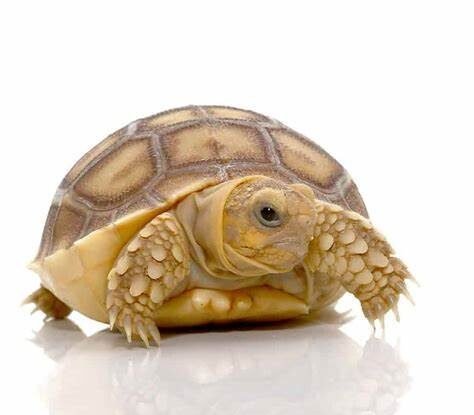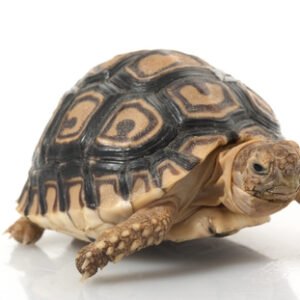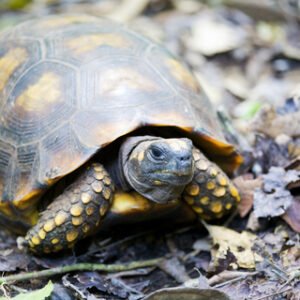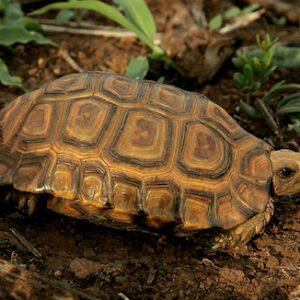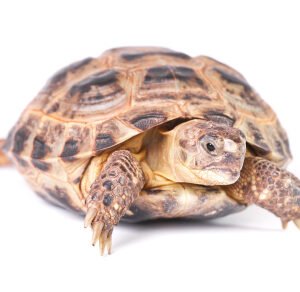Caring for Your Baby Sulcata Tortoise: A Comprehensive Guide
Understanding Sulcata Tortoises
Sulcata tortoises (Centrochelys sulcata), often referred to as African spurred tortoises, are remarkable creatures native to the arid regions of Africa, primarily found in countries such as Sudan and Senegal. These tortoises thrive in habitats characterized by grasslands and savannahs, where they exhibit a range of behaviors and adaptations well-suited to their environment. Recognized as one of the largest tortoise species in the world, adult Sulcata tortoises can weigh over 200 pounds and reach lengths of up to 30 inches, making their care and management a critical aspect for pet owners dealing with their baby stage.
One distinctive trait of the Sulcata tortoise is its domed carapace that features prominent scutes and a characteristic growth pattern. This shell is not only a protective structure but also serves as an essential indicator of their health and well-being. As a Sulcata grows, it can demonstrate variations in size and shape, heavily influenced by its diet and living conditions. During their early life stages, these tortoises grow rapidly, making it vital to provide an appropriate environment that supports their developmental needs.
Understanding the behaviors of baby Sulcata tortoises is crucial for their overall health. They are predominantly herbivores, feeding mainly on grasses, hay, and other fibrous vegetation. Providing a balanced diet mimicking their natural foraging behavior is essential, as inadequate nutrition can lead to serious health issues. In captivity, baby Sulcata tortoises may exhibit behaviors such as burrowing and basking, which are critical for thermoregulation and overall comfort. Therefore, a suitable habitat that includes both dry areas and access to heat helps replicate their natural habitat, reducing the chance of common ailments associated with inappropriate care.
Creating the Perfect Habitat
Designing an ideal habitat for a baby Sulcata tortoise requires careful consideration of several essential factors. The temperature is critical for the health of your tortoise; the basking area should be maintained at around 95°F (35°C), while the cooler side of the enclosure can be kept between 75°F to 85°F (24°C – 29°C). A temperature gradient allows the tortoise to thermoregulate effectively, which is vital for their digestion and overall wellbeing.
Humidity levels also play a significant role in the habitat. For baby Sulcata tortoises, maintaining 30% to 50% humidity is optimal. Overly moist conditions can lead to respiratory issues and shell rot, so it is crucial to monitor humidity levels rigorously. This can be achieved by providing a shallow water dish for drinking and soaking, while ensuring good ventilation prevents excessive humidity buildup.
Lighting is another critical component. UVB lighting is essential for the metabolic processes of Sulcata tortoises, particularly for calcium absorption. Therefore, providing a UVB bulb is vital, mimicking natural sunlight exposure. Ensure the light source is placed at the correct distance to avoid overheating.
The size of the enclosure should accommodate the tortoise’s growth; hence, a spacious area is recommended. For a baby Sulcata tortoise, a minimum indoor enclosure size of 4 feet by 2 feet is advisable, while outdoor enclosures can be much larger, allowing for natural foraging behaviors. Substrates such as aspen shavings, coconut coir, or grass hay should be used to provide a comfortable living environment. Furthermore, creating hiding spots with logs or cardboard boxes will help your tortoise feel secure.
Proper ventilation is crucial for preventing respiratory issues, ensuring adequate air circulation within the enclosure. Lastly, safety measures such as smooth edges and sturdy construction will help protect your baby Sulcata tortoise from harm. These elements combined will create a thriving habitat, supporting the health and happiness of your tortoise as it grows.
Diet and Nutrition for Growth
Providing a balanced diet is critical for the healthy growth of baby Sulcata tortoises. These reptiles thrive on a high-fiber diet, which should primarily consist of grasses and leafy greens. Suitable options include timothy hay, dandelion greens, and clover, as these foods mimic their natural feeding habits in the wild. It is essential to provide a variety of fibrous plants, as this helps ensure that your tortoise receives all necessary nutrients for healthy development.
In addition to grasses, vegetables such as squash, bell peppers, and various leafy greens can be introduced to enhance their diet. However, caution should be exercised regarding certain foods. High protein items like romaine lettuce, cauliflower, and spinach should be limited, as they can cause health issues if consumed excessively. Ultimately, the primary focus should remain on maintaining a diet predominantly composed of grasses and other suitable plant materials.
Calcium and Vitamin D3 are two vital components that play a significant role in promoting proper shell growth and preventing metabolic bone disease. Calcium should be provided through calcium supplements, while Vitamin D3 can be synthesized naturally when your tortoise is exposed to UVB light. In cases where natural sunlight is not accessible, a UVB lamp can be used to support your tortoise’s health.
To encourage foraging behavior, it is beneficial to scatter food items around their habitat rather than placing them in a single dish. This method mimics their natural foraging instinct, promoting both physical activity and mental stimulation. By providing a diverse array of foods and ensuring access to essential nutrients, you significantly contribute to the optimum health and growth of your baby Sulcata tortoise.
Routine Health Checks for Baby Sulcata Tortoises
Regular health check-ups are essential for the well-being of baby Sulcata tortoises. These routine assessments serve not only to monitor growth but also to catch potential health issues early. When conducting a health check, it is crucial to examine the tortoise’s shell closely, as deformities can indicate nutritional imbalances or improper husbandry. Healthy shells should be smooth and free from cracks or lesions.
Signs to Look For
There are several symptoms that owners should keep an eye out for. Signs of lethargy, refusal to eat, or abnormal breathing patterns may suggest underlying health problems, such as respiratory infections. Additionally, be mindful of any changes in eating habits or droppings, which can signal digestive issues. Observing the tortoise’s eyes can also provide insight into its health; clear and bright eyes are an indication of a healthy pet, while cloudy or swollen eyes demand immediate attention.
Common Health Issues
In addition to respiratory infections, baby Sulcata tortoises are susceptible to issues like metabolic bone disease and shell deformities, which often stem from inadequate calcium intake or improper lighting conditions. Creating an optimal habitat with UVB lighting and a proper calcium supplement regimen can significantly reduce these risks. Owners should also ensure that their tortoises have access to a varied diet rich in fiber, which supports digestive health.
Socialization and Handling
Socialization and handling are equally vital for fostering a trusting relationship with your Sulcata tortoise. Gentle, consistent handling can help reduce stress and make the tortoise more comfortable with human interaction. It is recommended to engage with your tortoise regularly, allowing it to explore its environment while supervised. This practice not only contributes to the emotional well-being of the tortoise but also enhances the bond between pet and owner.
When to Seek Veterinary Care
If you notice any concerning signs or changes in your tortoise’s behavior, it is crucial to consult a veterinarian specializing in reptiles. Prompt veterinary attention can prevent minor issues from escalating into major health concerns. Regular health checks and monitoring behaviors will empower owners to take proactive measures, ensuring their baby Sulcata tortoise remains healthy and thriving.

